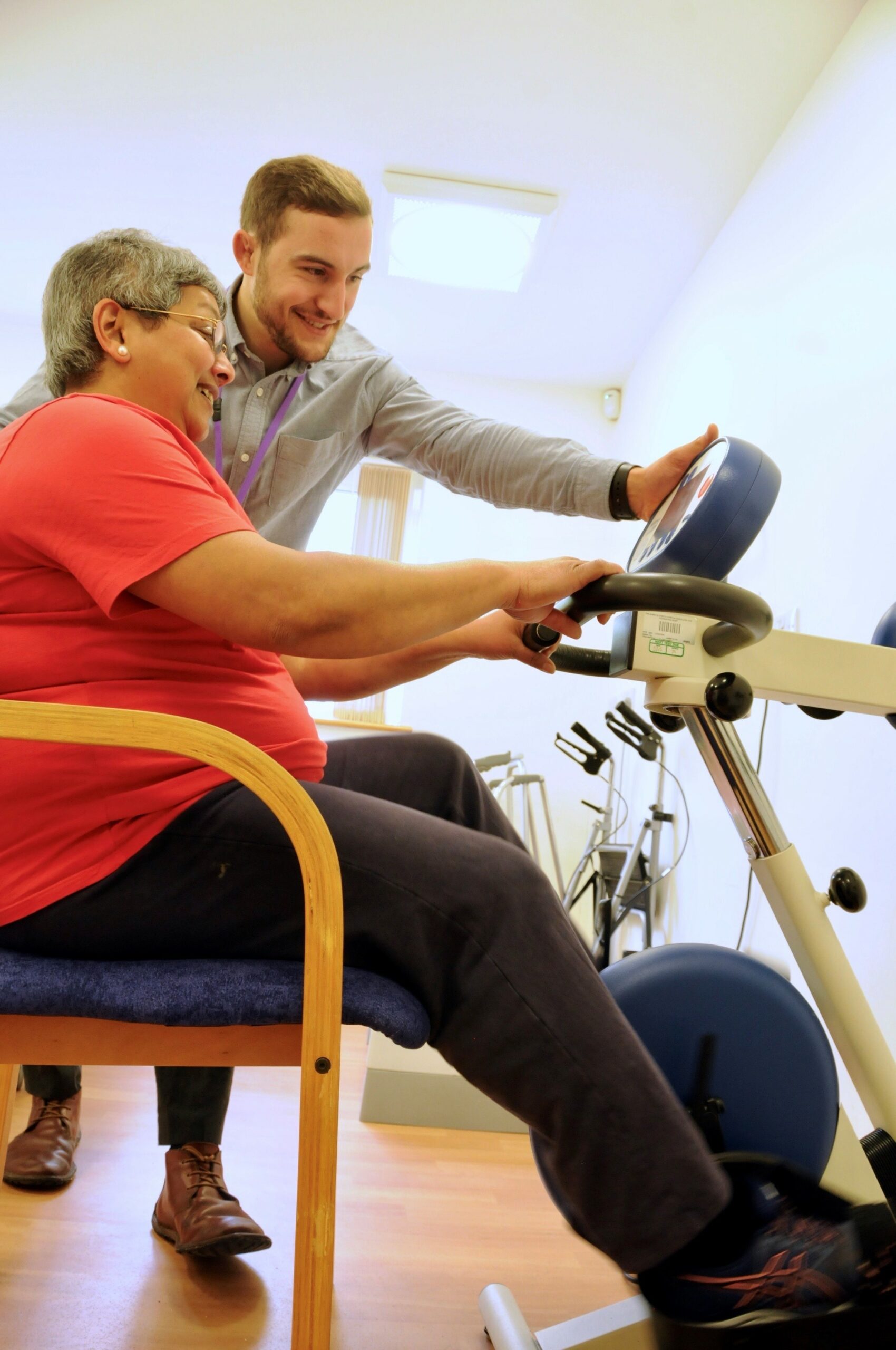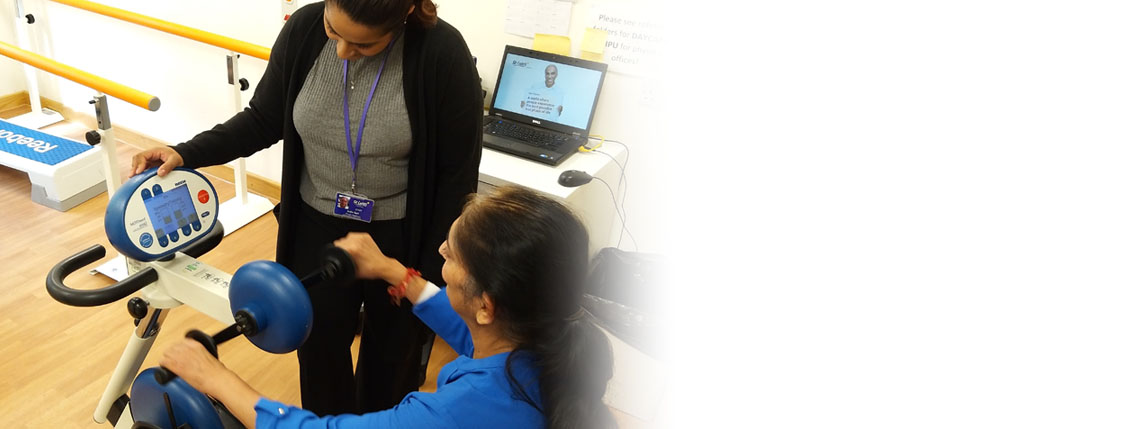St Luke’s Hospice (Harrow and Brent) uses exercise and physiotherapy to help manage symptoms and improve the well-being and mental health for people approaching the end of their life.
This week, 25 September marks National Fitness Day and the hospice will be delivering its popular exercise classes as usual. People visit the Woodgrange Centre at the hospice on Mondays to participate in an hour-long group circuit session. The class is based on a validated falls prevention tool called Morse Fall Scale (MFS)1 and Otago Exercise Programme (OEP).
The MFS has been used in a variety of patient populations and appears to be most elaborate in view of its extensive development and testing.2 This tool can be used to identify risk factors for falls. The score can be used to predict future falls but, more importantly, help to identify risk factors and then plan care to address those risk factors.
St Luke’s Hospice took the general model and applied different exercises for a circuit-based format. The class helps people achieve many different things at once; there are seven stations in total and it’s applicable to a wide range of people.
There is the common perception that hospice care only means ‘the last few weeks of life’. By 2038, one in four of the population will be aged over 653 and, according to research4, the number of cancer survivors in the UK is projected to increase by approximately one million per decade from 2010 to 2040, with four million people living with cancer in 2030. Nearly half of St Luke’s Woodgrange Centre visitors have a cancer diagnosis. It is therefore very important to offer exercise programmes to help improve quality of life.
Breathlessness is one of the key areas that affects people at the later stage of life. This is especially the case for people with Chronic Obstructive Pulmonary Disease (COPD). A lot of the exercise is general fitness, but it also provides pulmonary rehabilitation as well. The group exercise class incorporates resistance bands and light equipment to help improve function.
Commenting on the successful exercise programme, physiotherapist at St Luke’s Hospice, Dalton Urrutia, said, “When we initially launched the programme, we would ask for feedback every week from attendees. We slowly changed the delivery to meet individual needs. It has now evolved into a patient-driven class.”
Urrutia adds, “A great part of the programme is that we use low-impact bodyweight training to help people reach their goals. These goals could be everyday common movements such as walking, picking up the grandchildren, or being able to go up and down the stairs; I notice how quickly people get out of breath. To help them reach their goals, I facilitate gymnastic-based bodyweight movements, which can be really challenging. For some people, their legs might be weak, or they might be balance deficient due to hip weakness. I structure the sessions to help improve common weaknesses.”
St Luke’s Hospice in Harrow and Brent is helping people get basic function back into their lives. The hospice also delivers one-to-one sessions for those in the in-patient unit. These exercises might include passive stretching, bed exercises, or exercises to prevent bed sores. The level is varied depending on the condition.
One of its patients, Emma, has had experience of St Luke’s in-patient unit and the Woodgrange Centre services. Emma was diagnosed with stage 4 breast cancer and has benefitted from attending the Monday exercise sessions.
Emma said, “The staff at St Luke’s are wonderful. There is nothing that they won’t try and do for you. I suffer from a lot of back problems and Dalton is always so helpful; he structures my exercise programme to meet my needs. I like getting to know people at the exercise class who have a similar condition to me. We can relate to each other with what’s happening to us.”
Emma added, “I thought it would be totally different. I walk with a stick because of weakness in my left side but, because of the physiotherapy and the exercise classes at St Luke’s, I am now riding my daughter’s exercise bike. It took me a few months to get to that point. St Luke’s provided me with exercises to do on my own – I have the resistance bands at home. I would greatly encourage people to attend the exercise classes at St Luke’s. Just give it a try – see how it works for you. The staff will always find you some exercises to do depending on your individual needs that day.”
For more information about St Luke’s Hospice and its services, please visit:
stlukes-hospice.org/patients/day-services

Are you an instructor leading group exercise sessions?
Check out our insurance options for group exercise instructors here.








